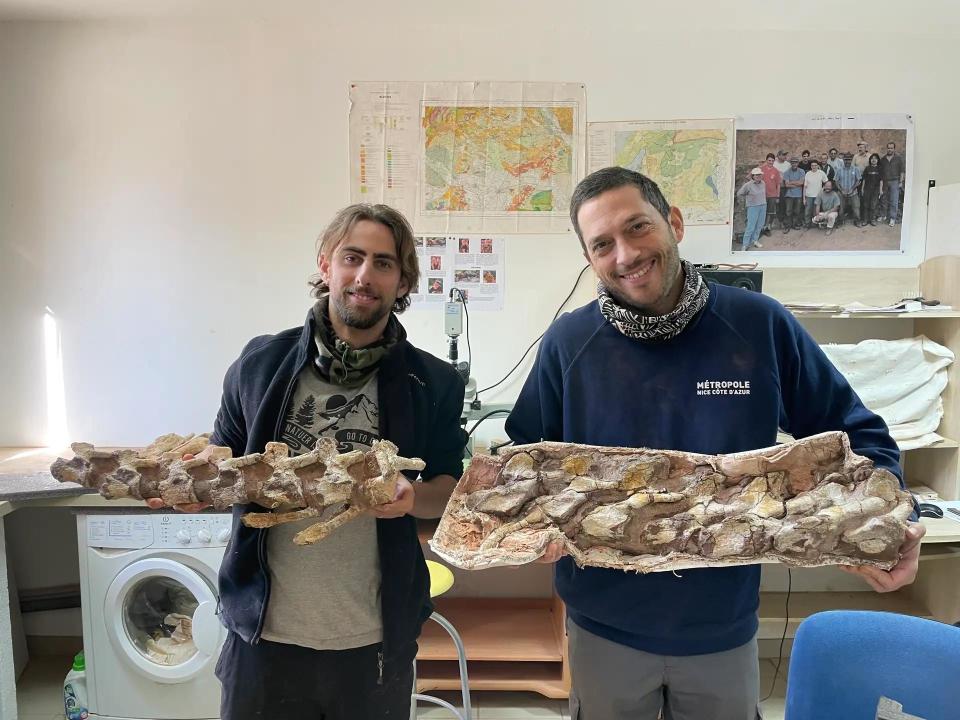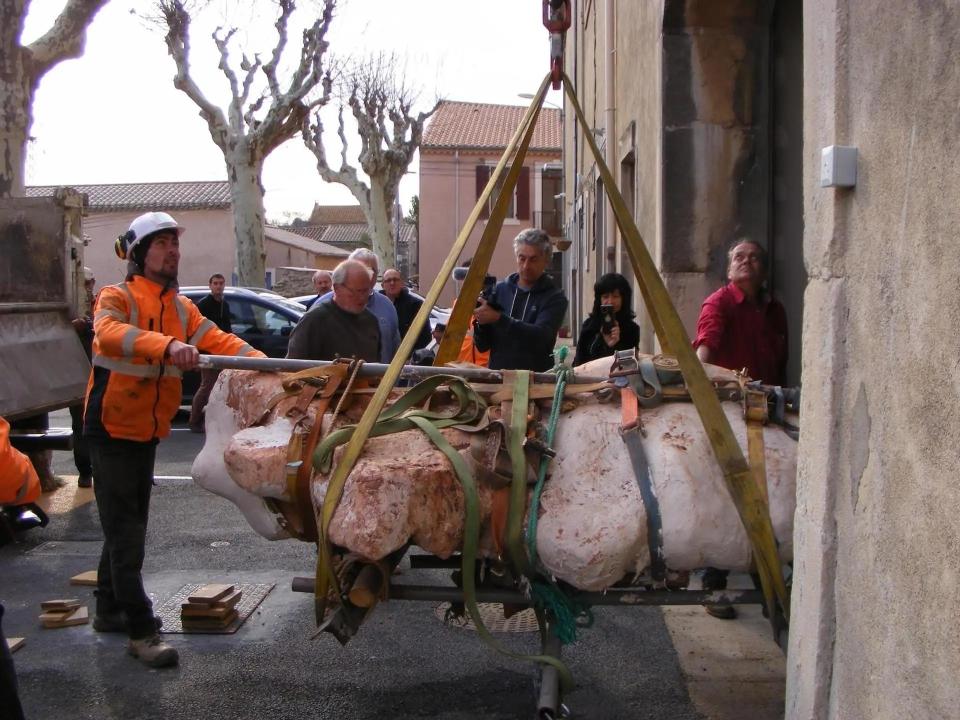Man walking his dog finds nearly intact dinosaur skeleton
A man walking his dog in France happened upon a prehistoric discovery: nearly intact dinosaur bones.
Damien Boschetto, a paleontology enthusiast, was walking with his dog Muffin when he saw the bones poking out of cliff that was partially eroded in Montouliers, a town in southern France.
Boschetto, a member of the Association of Culture, Archeology and Paleontology (ACAP), part of France's Cruzy Museum, told CBS News the skeletons were "a rare and exceptional discovery in France and Europe."
He said for the past 28 years, researchers have found fossils of dinosaurs and other species in Cruzy, a small village in southern France. But his discovery in the neighboring town of Montouliers led researchers to a new area where bones existed.

Boschetto and the association, which is made up mostly of volunteers, decided to keep his 2022 discovery a secret for two years to protect the site and "avoid damage during the extraction of the largest parts," he said in an email to CBS news.
Over a period of two years, Boschetto and the researchers set up several 10-day excavations, during which they found dinosaur skeletons that were almost completely intact, which is rare, he said.

The most complete specimen is a titanosaurus that is about 10 meters, or about 33 feet, long. While this type of herbivorous is widely present in Europe, it is rare to find their skeletons in almost complete anatomical connection, Boschetto said.
"This is what makes it an interesting deposit from a scientific point of view," he said. "From a museography point of view, it will make it possible to present to the general public animals almost complete in anatomical positions, which is something great."
The bones were taken to a laboratory at the Cruzy Museum, where they are stored and exhibited. "For the museum and the association of which I am a part, these new discoveries are important for science, the future of the museum and the collections," he said. "They will enable us to contribute to the expansion of the museum."

The ACAP is made up of volunteers who specialize in excavations and scientific research, according to its website. They work closely with paleontologists, France's National Centre for Scientific Research and local universities.
More than 25 species of dinosaurs have been found in the region by other scientists and ACAP volunteers, and more species are still being studied, according to the museum. Some findings have been around 70 million years old and have been found along a river, where the bones were carried by the current.
New York governor deploys National Guard to subways following string of violent attacks
Sen. Katie Britt delivers Republican rebuttal to State of the Union address
New report clears Uvalde police of wrongdoing in school shooting response

